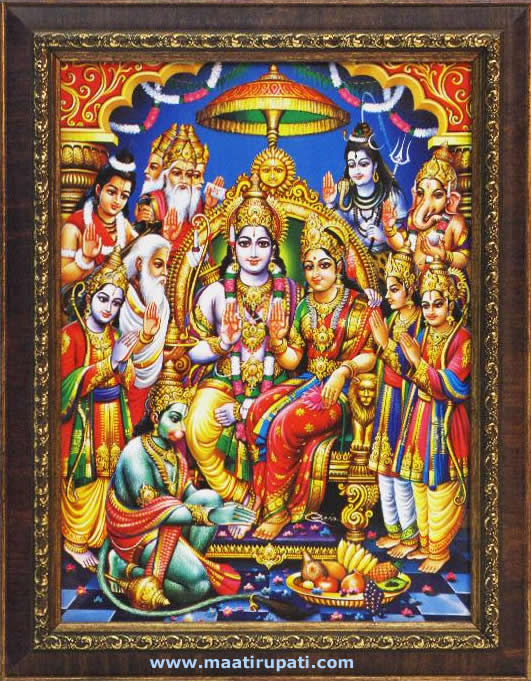Gotra is a system in India where the lineage of a person is identified.
The Gotra is recited in religious functions, especially in marriage.
The lineage, normally is traced to a Rishi ,then the clan is described, Grandfather, father’s name are mentioned.
The practice of Gotras is traced to the Vedas.
The Saptha Rishis are the earliest in the line of Gotras.
These Saptha Rishis are entrusted with the allocation of the Vedas for each clan for each Manvantara.
Read my Posts on Manvantara,Saptha Rishis,Rishis a Timeline,Pravara of Lord Rama.
The Gotra system was practiced by the Brahmins initially and later by the other castes.
So normally the Saptha Rishis are mentioned in the Gotras .
Apart from the Saptha Rishis, other Rishi Gotras are also found.
Like Siva, Vishnu.
Of these Gotras, Bharawaja Gotra is found in abundance in the North when compared to South India.
Siva and Vishnu Gotras are referred to in communities other than the Brahmins.
It is also a practice to mention the name of Subrahamnya as the founder for the Gotra ,if the Rishis are not known,(This is among the Smarthas).
Sri Vaishnavas use Bharatwaja in similar insurances.
For communities other than the Kshatriyas, Jambu Maharishi is mentioned.
Jamadagni, father of Parashurama is also mentioned among the Kshatriyas.
I have noticed that though classified as Avatars of Vishnu, Rama or Krishna Gotras are never mentioned.
Some mention is made of Krishna among some Yadava communities.
But in general Rama or Vishnu Gotras are not mentioned in the Pravaras.
Why?
Rama and Krishna, though avatars of Vishnu were born to Human beings and as such they had ancestors to whose lineage they belonged to.
This is yet another instance of Hinduism treating Gods as Human Beings and not some one special when they lived; their ancestors were given the respect due to them.
Therefore there ae no Gotras of Rama or Krishna in practice; in cases where they are mentioned it does not have the sanction of the Smritis.
I have noticed a curious fact when checking up the Pravara of Rama and Krishna.
Acroll down for Video for The Pravara of Krishna.
Rama belonged to Vasishta Gotra while Krishna to Garga.
Garga is not among the Saptha Rishis!
By the Gotras mentioned for Lord Rama, He is a Brahmin as Vasishta, was a Brahmin.
Garga is referred to as a Brahmin.
So Rama and Krishna are Brahmins by Lineage, not by profession.
This is yet another proof that a Man’s caste, even if it is an Avatar, is not determined by birth but by profession!
“Gotra can be used as surname but it is different from surname and is strictly maintained because of its importance in marriages among Hindus and especially among high Hindu-castes. Pāṇini defines gotra for grammatical purposes as apatyam pautraprabhrti gotram (IV. 1. 162), which means “the word gotra denotes the progeny (of a sage) beginning with the son’s son.” When a person says “I am Kashyapa-gotra,” he means that he traces his descent from the ancient sage Kashyapa by unbroken male descent. According to the Brihadaranyaka Upanisad 2.2.6, Gautama and Bharadvāja, Viśvāmitra and Jamadagni, Vashishtha and Kaśhyapa and shandilya are seven sages (also known as Saptarishi); the progeny of these eight sages is declared to be gotras. This enumeration of eight primary gotras seems to have been known to Pāṇini. The offspring (apatya) of these eight are gotras and others than these are called gotrâvayava. There exists another theory about gotra: sons of rishi and disciples of the gurukul would have same gotra. It is believed that they possess similar thought and philosophy. People of same gotra can be found in different castes….
As a Rigvedic term, gotra simply means “cow shelter” or “herd of cows”. The narrowed meaning “family, lineage kin” (as it were “herd within an enclosure”) is younger, first recorded around the mid 1st millennium BCE (e.g., Chandogya Upanishad).
These “lineages” as they developed among the Brahmins of that time meant patrilineal descent. The Brahmanic system was later adopted by other communities, such as theKshatriyas and Vaisyas
All members of a particular gotra are believed to possess certain common characteristics by way of nature or profession. Many theories have been propounded to explain this system. According to the brahminical theory, the Brahmins are the direct descendants of seven or eight sages who are believed to be the mind-born sons of Brahma. They are Gautama, Bharadwaja, Vishvamitra, Jamadagni, Vashista, Kashyapa and Atri. To this list, Agasthya is also sometimes added. These eight sages are called gotrakarins from whom all the 49 gotras (especially of the Brahmins) have evolved. For instance, from Atri sprang the Atreya and Gavisthiras gotras.[4]
A gotra must be distinguished from a kula. A kula is a set of people following similar cultural rituals, often worshiping the same divinity (the Kula-Devata, god of the clan). Kula does not relate to lineage or caste. In fact, it is possible to change one’s kula, based on one’s faith or Iṣṭa-devatā.’
Reference and Citation.





Leave a reply to Shuka Brahmam Cancel reply